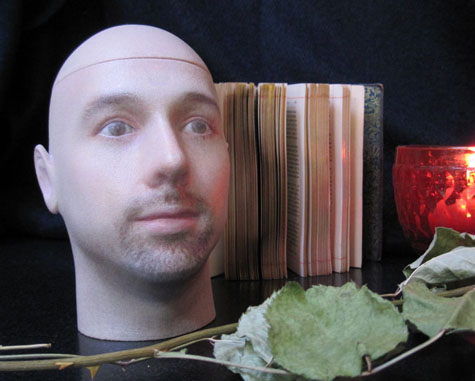Death masks are so eighteenth century. Cremation Solutions – purveyor of creative cremains transformations—offer urns that look like the noggin of the dearly departed, or whoever’s head it is you want to be stored in.

I am suspicious of company names that boast “solutions,” as that implies the industry in question has all sorts of unnamed problems. But I suppose cremation does have problems, if your problem is wanting to be buried in a replica of your favorite celebrity’s head. Dilemma solved!
Working from ordinary photographs, modeling software and 3D printing can reconstruct objects—in this case, creepy heads with hollowed centers to hold ashes. From the photos on the site, it looks like the skullcap slides right off—convenient, sure, but this is an urn, not a cookie jar, and the overall product could stand looking less lobotomized. Hair is also a hindrance; it can be added digitally upon request or you can throw on a wig yourself for extra realism and remembrance.
The full-sized option at $2600 will store all the ashes of a person while the $600 keepsake urn holds only a portion of ashes. It is unclear whether the keepsake size results in a smaller compartment for cremains or in an entirely shrunken head. Either way, it is a more affordable option for those who wish to purchase multiple heads for multiple mantles for maximum soulless gazes following everyone in the room simultaneously no matter how hard one tries to hide.
I suppose in this weird world, there is a market for this product. But from the vague photos and the lack of explanation—the process more thoroughly explained, along with a description of the materials—the personal urns don’t seem particularly high quality, especially for the price. One could likely recognize an urn head as being a certain person, but it’s not terribly realistic. The question is, would you want it more realistic.
If you’d want this thing at all, probably yes. So I wouldn’t amend that preneed just yet. There’s bound to be something better soon as 3D rendering technology improves.
